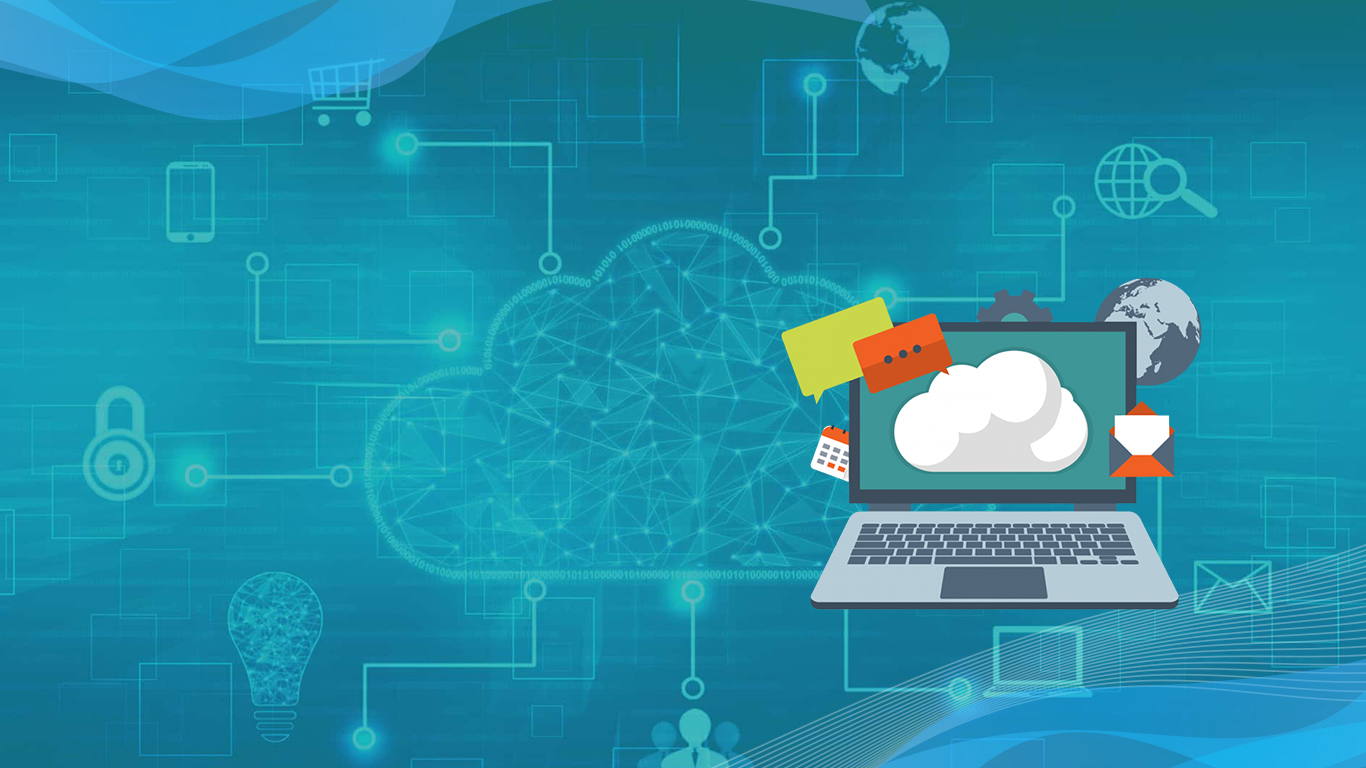
The Cloud has changed the way we use software. A cloud-based app is an Internet-run program with components stored online with some (or all) processes executed in the cloud. Enterprise's no longer need to maintain in-house infrastructure, Software as a Services(SaaS) brings about a revolution that relieves you from hardware management, upgrades, and support.
For years, organizations have been moving their software and systems into the cloud. According to Gartner the market for cloud solutions is growing at almost 20 percent per year. If you use a computer or a smartphone, you are almost certainly interacting with the cloud, whether you are aware of it or not.
We develop SaaS applications that our clients deliver to their end customers as a service on a subscription basis. We have been developing Cloud & web applications for the custom business requirements. Our developer’s skills & experience and cutting-edge technology will deliver you with Robust Cloud & Web Applications.Whether you want to go the lift and shift route or you want to completely change the architecture of your current environment, migration to the cloud is a core part of our cloud services.
We work on popular web platforms and web technology stacks that are fully responsive and tailored to specific business needs.Our in-depth technology expertise and multifaceted domain experience can help your organization to experience a seamless cloud adoption and integration leading to sustainable growth.

The Software-as-a-Service (SaaS) distribution model lets users access applications hosted online or cloud and is accessed via the internet and a web browser, typically on a subscription basis, thus freeing them from possible installation, maintenance or integration issues. SaaS customers have no hardware or software to buy, install, maintain, or update. Access to applications is easy: You just need an Internet connection. This is as compared to a traditional “on-premises application,” which is software that is installed on a computer in your office.
Another important thing for SaaS applications is content delivery network(CDN),it ensures that users can quickly and reliably access your site or app from anywhere in the world by providing a network of servers distributed across the globe. When a user tries to access your product, the closest server responds. A content delivery network, therefore, ensures a perfect user experience no matter the user’s location.
Organisations are now developing SaaS integration platforms (or SIPs) for building additional SaaS applications. This is called the “third wave” in software adoption: when SaaS moves beyond standalone software functionality to become a platform for mission-critical applications.
The market for SaaS applications is emerging at a rapid pace,If you are looking out for the SaaS development service provider, we can help you develop SaaS applications with our expertise in the SaaS business model.
Cloud-native applications are indigenous to the cloud, they are built in the cloud and deployed in the cloud, truly accessing the power of cloud infrastructure. Cloud-native technologies are used to develop applications built with services packaged in containers, deployed as microservices and managed on elastic infrastructure through agile DevOps processes and continuous delivery workflows.
While cloud-native applications are containers based and associated with orchestration frameworks such as Kubernetes,there are Cloud-based or cloud enabled applications which are legacy applications that were designed to run on-premise servers and that have been modified to run in the cloud. It is much cheaper and easier to do this than to rewrite an entire application from the ground up for the cloud. In a nutshell, cloud-based applications are brought to the cloud; cloud-native applications were born there.
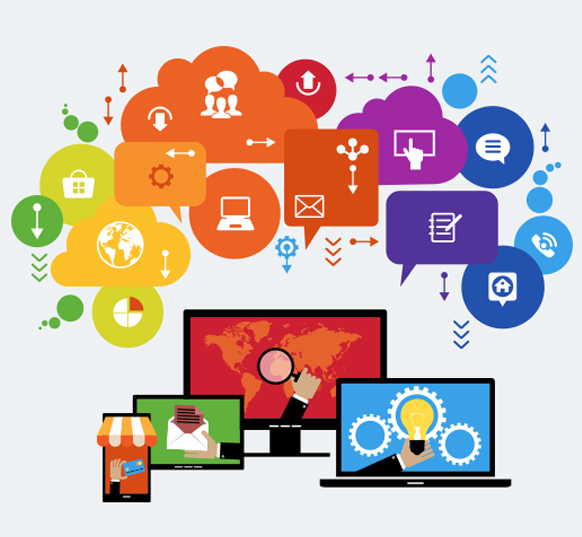
Cloud-native applications are multi-tenant, which means that a single instance of the software can serve multiple clients. This allows the software vendor to take advantage of true “economies of scale” in labor and computing resources, allowing them to price their offering very competitively.A multi-tenant approach allows for much quicker setup and deployment of the cloud-native software. Since there is only a single instance of the application for multiple organizations, new customers can be added rapidly. Users can have access to the software and begin using it in a matter of minutes instead of hours or days with legacy applications.
Cloud-native applications are made on a microservices architecture that are designed as an independent module to serve a particular purpose.These are made as microservices packaged in containers and are deployed in the cloud.
Cloud-native applications are highly scalable, real-time changes can be made to the individual modules without causing disruptions to the whole application.Cloud-native applications require no hardware or software investments as they are made on the cloud and are generally available on the licensee, thus relatively cheaper to use.
Our cloud-based services relieve you from the bother of hosting, servers and other mundane worries.
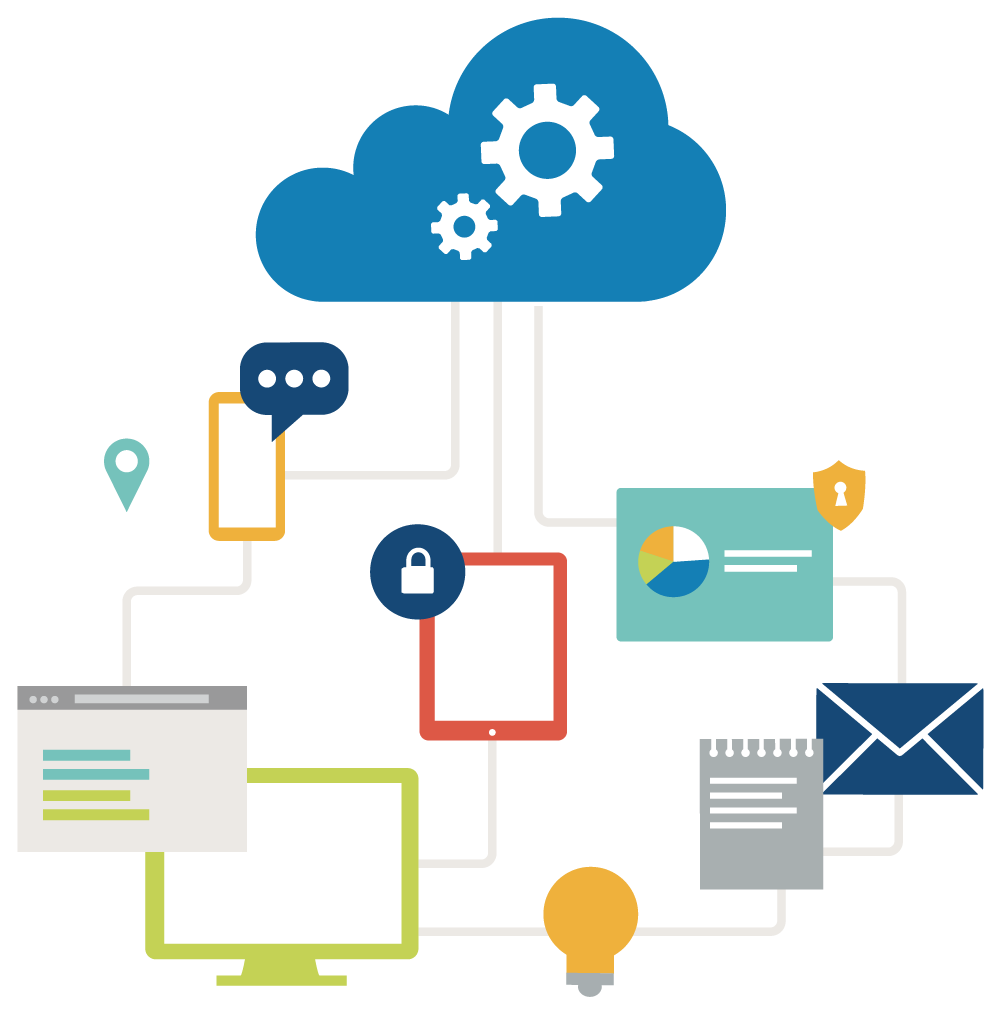
Today, the success of almost all business ventures is tied to technology, and many companies are tech businesses. As a business grows and expands, so does its IT infrastructure needs. Faced with increasing demands, businesses are looking for ways to scale their infrastructure. However, scaling traditional, on-premises, IT infrastructure is costly.
Cloud infrastructure offers the ability to scale IT infrastructure up or down, depending on the company’s current needs.Scalability, along with security and cost-effectiveness, is one of the greatest advantages cloud can offer. Moving your business applications and data to the cloud can be a great strategic move that gives you a competitive edge by reducing IT costs, enabling application scalability and many other benefits.
Cloud migration is the process of moving applications, data, and other components hosted on servers inside an organization to a cloud-based infrastructure. In other instances, cloud migration could involve a business moving away from one cloud provider to another, such as migrating an application from AWS services to Azure.
Migrating to the cloud requires strategic planning. So, before you begin, we advise that you consider the key objectives of why you want to migrate to the cloud – including the way you want to work once the migration has been executed. This also may involve moving all your applications and services, or it may take a slower approach where some applications are moved to the cloud, while others remain on-premise. This approach is called a hybrid migration. However, the cloud migration process can be painful without proper planning, execution, and testing. Nimaisoft helps you build better strategies as per the business requirements.
Many leading cloud providers like Amazon AWS, Microsoft Azure, and Google Cloud Platform provide the hardware and offer a variety of rich apps and services for continuous integration, data analytics, artificial intelligence, and more.
At Nimaisoft, our cloud-neutral products can easily integrate with most leading cloud-based solutions.
Serverless, the new buzzword with a slogan “Focus on your application, not the infrastructure” in town has been gaining a lot of attention from the pros and the rookies in the tech industry.
Serverless computing is a method of providing “Backend as a Service” (BaaS) services on an as-used basis. Serverless application includes custom code run in managed, ephemeral containers on a “Functions as a Service” (FaaS) platform, and fully managed by the cloud provider.
A serverless provider allows users to write and deploy code without the hassle of worrying about the underlying infrastructure. A company that gets backend services from a serverless vendor is charged based on their computation and do not have to reserve and pay for a fixed amount of bandwidth or number of servers, as the service is auto-scaling.

Serverless computing offers a number of advantages over traditional cloud-based or server-centric infrastructure. For many developers, serverless architectures offer greater scalability, more flexibility, and quicker time to release, all at a reduced cost.
We let you build comprehensive serverless apps easily and quickly with leading data analytics, machine learning, and messaging services. We handle the configuring, provisioning, load balancing, sharding, scaling, and infrastructure management, so you can focus on building great applications.
Serverless architecture can be used for building mobile apps and web applications.
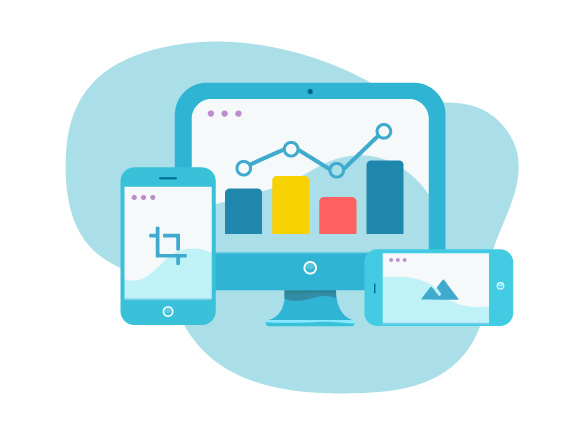
In today’s business world, information technology (IT) continues to be the engine that drives competitive advantage and long-term success. However, IT departments face mounting budget scrutiny at a time when their innovations are most needed.Today, we witness the emergence of development platforms called Zero Code Platforms that let end users build applications without writing any code.
Digitization demands faster development cycles than IT is able to provide.With ZeroCode Start and accelerate your digital transformation journey. You can build and deploy software faster than you thought possible.
Develop applications without programming. Lengthy code writing. Quality coding professionals. No more bugging. ZeroCode platform provides Readymade building blocks, which can be gathered in a graphical environment and made into software solutions without any coding. As the large chunk of code from the developers gets bypassed, the final deployed code is assured of quality and standards.
zero-code aims to change the software development landscape by providing zero-code development platforms where citizen developers(business users who are not into coding) can create the applications of their choice, even if it’s complex, without writing a single line of code.A zero-code platform enables your businesses to create apps on their own, without needing to wait on IT for each and every implementation. Zero-code solutions remove a crucial bottleneck and reduce dependency on IT for essential apps.
A zero-code platform enables business leaders and employees to develop their own enterprise apps without any technical knowledge. Such platforms contain intuitive drop-down menus and app module interface for simplifying app development. With a zero-code platform, organizations can easily create numerous customizable enterprise applications for their employees. Due to simplified app development, zero-code platforms have the potential to decentralize enterprise app development for several organizations.
Nimaisoft help you build the citizen development requirements for your business.
People often get confused between websites and web portals, as both are great platforms, but used for entirely different purposes.A website is generally an online representation of any business, but, a web portal is user-centric, i.e. users come to these portals to seek some sort of information or data. In short,A web portal is a web-based platform that provides customers,employees,partners and suppliers with a single access point to information.A self-service portal is always helpful for establishing long-term relations with the stakeholders.
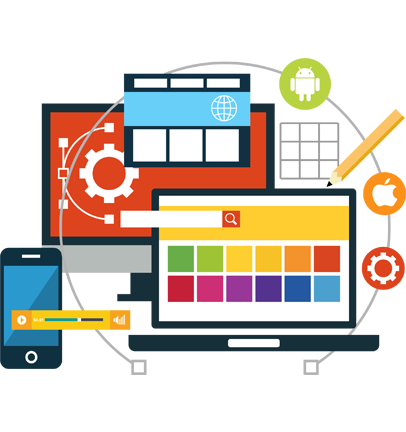
Horizontal Web Portals
Also known as, Horizontal Enterprise Portals, these are the general portals that can be used as a common platform by several companies, to provide all kinds of information, which a user may require while looking for their services. Some of the common examples of horizontal web portals are government portals, educational portals, corporate portals, cultural portals, etc.
Vertical Web Portals
Also known as Vertical Enterprise portals or vortals, these are the user-centric portals, that provide information related to specific company, interest, or services. A user looking for information about any specific topic or about a particular company can find these types of portals helpful. If a business wants to share something specific related to their services, they can opt for expert and experienced web development services, for getting vertical portals developed, as per their business requirements.
We apply the most suitable technologies for your business needs and ensure an immense level of personalization and usability of your portal. We ensure a portal’s architecture allows on-the-go changes harmlessly to its performance. Be it a big or small portal, our experts make sure it benefits the Customer’s business with a strong online image.
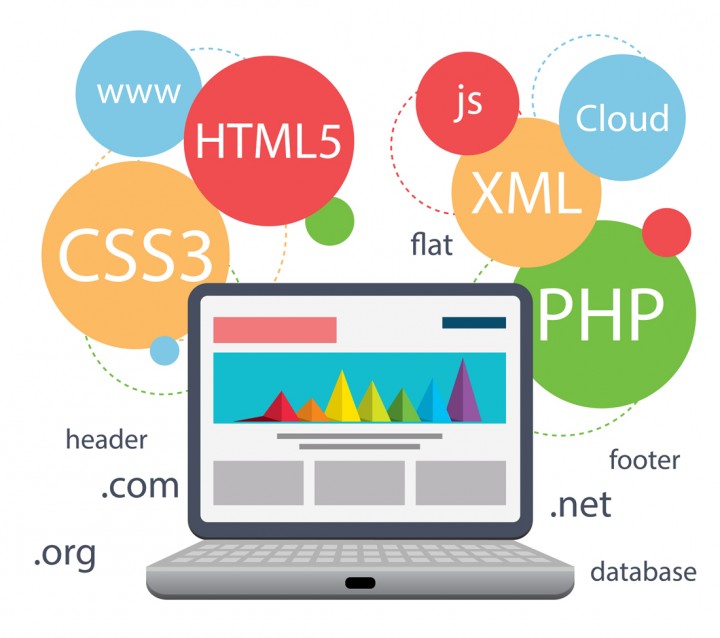
An enterprise portal or enterprise information portal (EIP) is a framework used to support and integrate processes, people and information across an organization. It gives a unified and secure gateway for information and a knowledge base for employees, partners, and customers. The enterprise portal provides the same services as a website, such as a search engine, email, customized and up-to-date content, and may also provide direct access to the internet or other portals. Modern enterprise portals aggregate and render content, data and services through web services and APIs, and so can act as a perfect foundation for delivering content and APIs to other websites and mobile apps.
B2C customer portal
B2B customer portal
Partner portal
Vendor portal
Community portal
Learning portal
Our team specializes in digital data management to capture, modify and process data originated from various sources. It also guarantees easy accessibility and reduces the business time and expenditure with document version control, storage, publishing, data repositories, distribution (audio/video streaming) and integrated search.
Our developers create and develop customized, secure, reliable and robust enterprise portal development with easy access to social networks and communities.
Today more and more people prefer to buy articles through the internet and assisted technologies. The proliferation of Ecommerce today is extremely high, leading to a significant increase in the demand for e-commerce development services. The key factors driving this e-commerce revolution is social media, advances in e-commerce app development, rising preference for mobile commerce, and other digital modes.
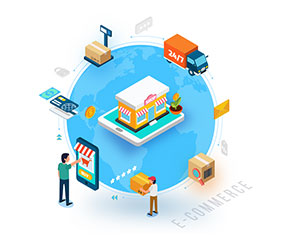
Business to Consumer(B2C)
Business to Business(B2B)
Customer to Customer(C2C)
Consumer to Business(C2B)
Mobile Apps
One-to-One Marketing
Faster Payment
Fit to Need
Our eCommerce development services team will provide you with customer insights, merchandising strategy, technology, supply chain and digital marketing strategy that will help you become a leading eCommerce player in your industry.
We can get you a custom ecommerce store built from the base. Our development team can identify and analyze your requirements. Our e-Commerce solution comes with a wealth of features and capabilities designed to help you launch a powerful online web store in a very short time.
Content Management System(CMS) is a web application that makes content authoring and content delivery easy enabling even non-technical users to efficiently build a website, streamline the web publishing procedures and quickly deploy them, creating a content-rich website.
Popular features of CMS website development focus on the ability to update content quickly, alter design using templates, and a hierarchy of user seniority designations. Effective CMS content management system development services are all about offering an intuitive way to manage your site from a single control panel, rather than the necessity of knowing raw code or spending hours trying to tweak a tiny detail of your site.
Typically, a CMS Website Development consists of two key elements:The Content Management Application (CMA) and the Content Delivery Application (CDA).The CMA element allows the content manager or content editor, who may not know Hypertext Markup Language (HTML5) coding, to create, manage, modify and remove content from a website without needing the expertise of a Webmaster.The CDA element uses and compiles that information to update the website.

Our CMS solutions will allow you to alter the content on your website whenever you require, so that you can have complete control of your own site and its design. You can add, edit and delete pages even if you have no HTML skills, allowing you to keep your site fresh and up to date at all times.
At Nimaisoft, we have a team of experienced consultants and developers that make use of content management system best practices for CMS web application development and also to work on all major Content Management Systems like WordPress, Drupal, Magento,Umbraco and Joomla. Choose the most apt CMS development services, according to your business need. Our CMS solutions focus on saving you time, money, and frustration by providing all-inclusive, easy to use tools.